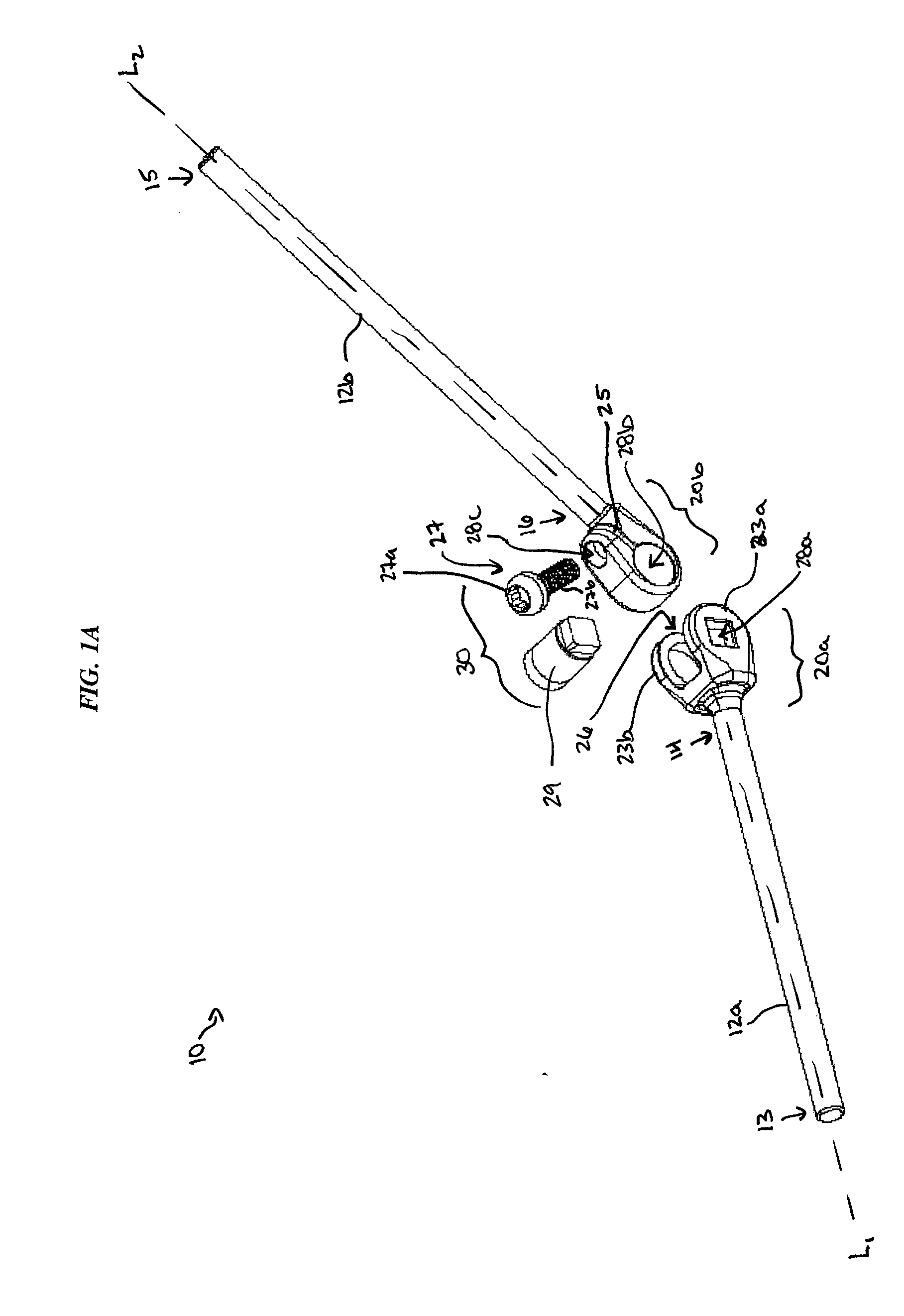Adjustable-angle spinal fixation element
- Summary
- Abstract
- Description
- Claims
- Application Information
AI Technical Summary
Benefits of technology
Problems solved by technology
Method used
Image
Examples
Embodiment Construction
[0027] The present invention provides various angularly-adjustable spinal fixation devices, each of which generally includes first and second elongate members 12a, 12b, a connecting feature 20 formed on a terminal end of each of the first and second elongate members 12a, 12b, and a locking mechanism 30 that is adapted to lock the first and second elongate members 12a, 12b in a fixed position relative to one another. The elongate members 12a, 12b are preferably spinal rods and / or plates that are used, for example, in the stabilization of the spine following trauma, tumor, or degenerative pathologies. Among many other advantages, the devices are particularly useful to allow a spinal rod to be positioned and locked in a desired angular orientation without the need to reshape the rod, and without requiring the point of adjustment to be attached to the spine of a patient.
[0028]FIGS. 1A-1B illustrate one exemplary embodiment of a spinal fixation device 10 having first and second elongate...
PUM
 Login to View More
Login to View More Abstract
Description
Claims
Application Information
 Login to View More
Login to View More - Generate Ideas
- Intellectual Property
- Life Sciences
- Materials
- Tech Scout
- Unparalleled Data Quality
- Higher Quality Content
- 60% Fewer Hallucinations
Browse by: Latest US Patents, China's latest patents, Technical Efficacy Thesaurus, Application Domain, Technology Topic, Popular Technical Reports.
© 2025 PatSnap. All rights reserved.Legal|Privacy policy|Modern Slavery Act Transparency Statement|Sitemap|About US| Contact US: help@patsnap.com



